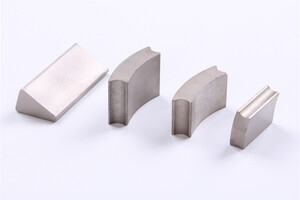Some Recommendations For Strong Neodymium Magnets Choice
Body
There are many types of magnets on the market today, and different magnets have different functions and applications. For those who are new to magnets, choosing the right magnet is indeed a problem. To help them solve this problem, in today’s article, we will focus on how to choose the rightStrong Neodymium Magnets.
1. How Will the Magnet Be Used?
The application of the magnet is one of the most important things to consider. Think about how to use the magnet and what purpose it is used for.
2. Where Will the Magnet Be Used?
Think about the space your magnet needs to fit and the space around it. What is the required length, width, height, or diameter? Is the standard shape (such as block, disc, or spherical) appropriate, or is the space irregular? Is the surface rough, flat, smooth, or porous? Do I need adhesive on one side of the magnet? Are there weight restrictions or requirements? Do you plan to use magnets indoors, outdoors, or in both places?
3. What Type of Magnets Do You Need?
There are many types of magnets available on the market today, each with different properties. The most common ones are neodymium magnets, alnico magnets, SmCo magnets, and ferrite magnets.
Neodymium magnet, also known as NdFeB magnet, is the most commonly used rare earth magnet and is widely used in electronic products, such as hard drives, mobile phones, earphones, and battery-powered tools. This kind of magnet has the advantages of extremely high magnetic energy product and coercivity, as well as high energy density. At the same time, it also has good mechanical properties and can be easily processed into various shapes, including special-shaped magnets.
AlNiCo magnet is an alloy composed of aluminum, nickel, cobalt, iron, and other trace metal elements. The advantages of AlNiCo magnets are high remanence (up to 1.35T) and low-temperature coefficient. The disadvantage is that the coercivity is very low (usually less than 160kA/m) and the demagnetization curve is nonlinear. Therefore, although AlNiCo magnets are easily magnetized, they are also easily demagnetized.
SmCo magnet is made of samarium, cobalt, and other metal rare earth materials through proportioning, melting into alloys, crushing, pressing, and sintering. SmCo magnet has a high magnetic energy product and extremely low-temperature coefficient. Its maximum working temperature can reach 350℃. When the working temperature is above 180℃, its maximum magnetic energy product, coercivity, temperature stability, and chemical stability exceed the NdFeB magnet.
Ferrite magnets are permanent magnets mainly made of SrO or BaO and Fe2O3. Compared with other permanent magnets, ferrite magnets are hard and brittle and have lower magnetic energy. However, they are not easy to demagnetize, not easy to corrode, and have simple production processes and low prices. Therefore, ferrite magnets have the highest output in the entire Neodymium Magnet Manufacturer industry and are widely used in industrial production.












Comments